Alien moons might be forming around exoplanet PDS 70c
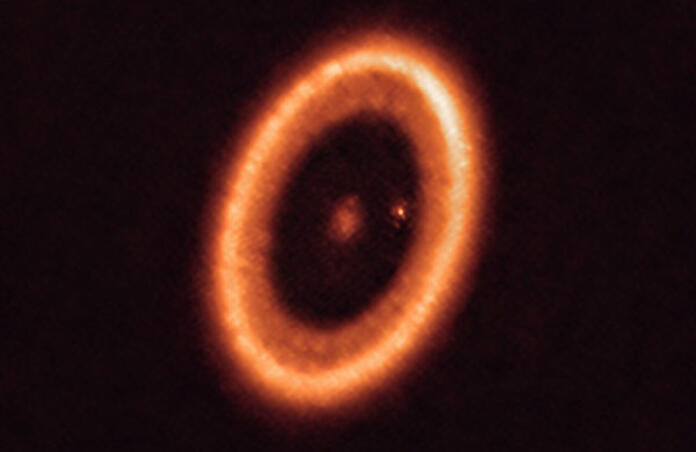
ALMA spots a disc of gas and dust around an exoplanet in the PDS 70 system, which may hint at moon-formation mechanisms.
Typically, astronomers detect exoplanets which are in fully “established” or mature systems, where the star has reached its stable Main-Sequence lifetime, the planets are fully formed, as well as any potential moons. Now, an international team interpreted data taken with the Atacama Large Millimetre/submillimetre Array (ALMA) in a study of the PDS 70 exoplanetary system. That system has been known to have a circumstellar disc, which is a ring of gas and dust in orbit around a star, for years. It’s from that circumstellar material that planets and asteroids form.
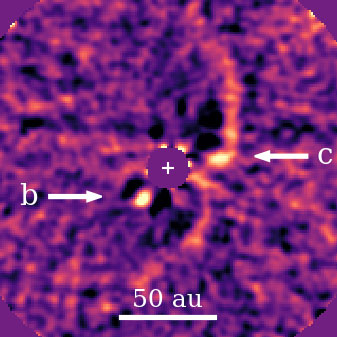
Last year, observations taken with the Keck II Telescope at Mauna Kea, Hawaii, revealed the presence of young exoplanets PDS 70b and PDS 70c in this system – the star can be referred to as “a” and then planets are labelled outwards with letters. It was possible to estimate the mass of these nearly-grown planets, 2-4 Jupiter masses and 1-3 Jupiter masses respectively, as well as their distances to star PDS 70a. The star, which is also known as V* V1032 Cen or IRAS 14050-4109, is at 22 Astronomical Units (1 A.U is the distance Earth-Sun) from b, similar to the Sun-Uranus distance, and 34 A.U. from c, similar to the distance from Sun to Neptune.
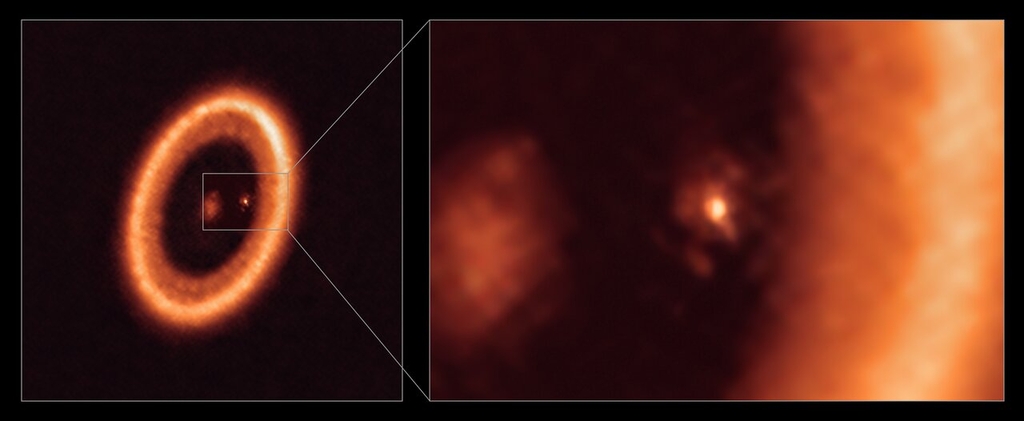
Now, the even more detailed ALMA images of the PDS 70 system show that the outer planet is surrounded by a 1.2 A.U. wide circumplanetary disc, which much like the circumstellar disc for a star, is a collection of gas and dust – since the planets are thought to have finished their “growth” phase in which they accrete material, the gas and dust from PDS 70c’s disk could well lead to the formation of Moons. In fact, it’s as they orbit their star and collect material for “themselves” that planets can create their circumplanetary disc. What’s so special about PDS 70c’s disc is that it’s fully separate from the circumstellar disc; note that it contains enough material to form three moons of the size of our Moon – but whether one, two, or more objects will form from PDS 70c’s disc is still very much open. All this has contributed to the PDS 70 system being described as a “textbook example of planet and moon formation”, as it is the only one discovered to date that is still being “finalised”.
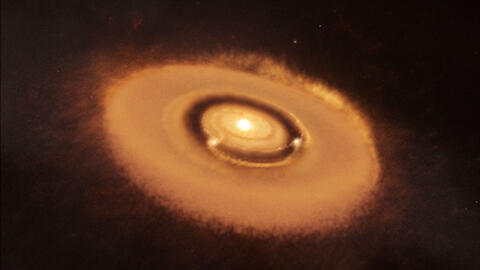
PDS 70 system: planets accrete material from the circumstellar disk, eventually building their own circumplanetary disk 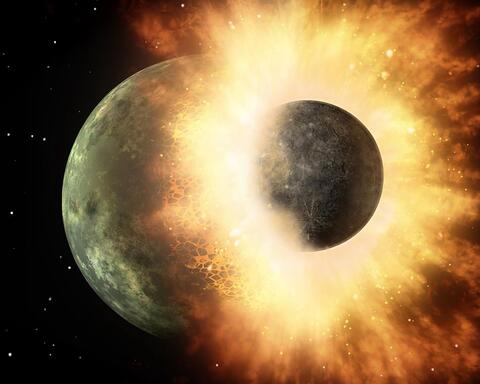
Giant impact hypothesis
One of the most popular theories about the Earth’s Moon’s formation is the giant impact hypothesis, which postulates that a Mars-sized body named Theia collided with the Earth as it was forming 4.5 billion years ago. Many observations favour this scenario over accretion: for instance, geological evidence suggests that the Moon was once molten, which would follow from a highly energetic process like a collision; also, the momentum contained in the Moon’s rotation and its revolving around Earth is much higher than Mercury’s, Venus’ or Mars’. What can’t be explained though, is how the debris of Theia after the impact with the proto-Earth evolved into a single Moon - it requires extremely specific parameters in giant impact computer simulations to achieve this.
How moons form, including our Moon, is very mysterious, but monitoring the evolution of the PDS 70 system could give us some insights into how Moons get created in circumplanetary discs around gas giants.
Cover Image: PDS 70, ALMA (ESO / NAOJ / NRAO) / Benisty et al.
Image Credits:
1 - PDS 70b and PDS 70c, J. Wang (Caltech)
2 - PDS 70 system, W. M. Keck Observatory / A. Makarenko
3 - Giant impact, NASA/JPL-Caltech
